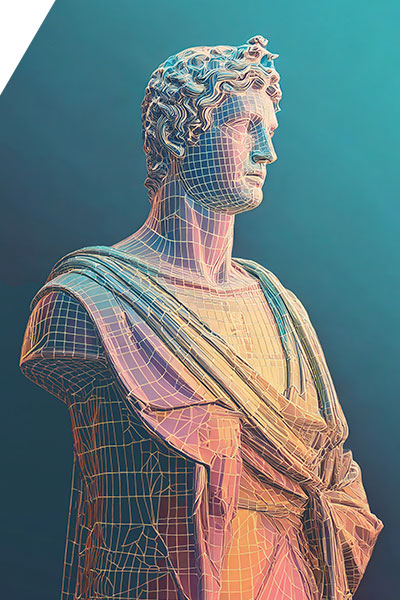MetaHeritage – Enhancing Cultural & Corporate Heritage and Tourism through Digital Technologies

MetaHeritage is an I3 (Interregional Innovation Investments) capacity building project designed to test innovative business models and explore ‘out-of-the-box’ approaches such as Heritage Routes and the Metaverse to mobilize cultural as well as corporate heritage and digital technologies for innovation and economic growth across European regions. Heritage innovation involves applying creative and forward-thinking strategies to businesses with their own corporate heritage or those deeply rooted in cultural heritage. By integrating tradition, historical assets and modern technologies, heritage innovation creates new business models, strengthens strategic branding and market positioning, enhances brand value and fosters sustainable economic growth.
Key aspects of heritage innovation are:
- Interdisciplinary Collaboration: Bringing together heritage and brand experts, businesses, digital providers and policymakers to create new industrial value chains.
- Digital Transformation: Using AI, VR/AR, blockchain, 3D scanning and the Metaverse to digitise and enhance cultural as well as corporate heritage experiences.
- Business Model Innovation: Developing new revenue streams through heritage branding, experiential tourism and heritage-based product development.
- Creative & Cultural Industries: Applying design, storytelling and digital tools to transform heritage assets into globally competitive brands and services.
- Sustainability & Adaptive Reuse: Finding eco-friendly and innovative ways to restore and repurpose heritage sites, buildings and businesses.
By bridging tradition and technology, MetaHeritage strengthens the EU’s commitment to prioritising digital innovation in Cultural and Corporate Heritage and Tourism. The project is co-funded by the European Innovation Council and Small and Medium-Sized Enterprises Executive Agency (EISMEA) and is implemented by a consortium of 10 partners and 5 associated partners from across Europe.
The project will develop a series of activities. Networking events, collaboration across industries, and participation in innovation ecosystems will connect a wide range of stakeholders across Europe. These activities will enhance regional networks, provide access to resources, and open new opportunities for growth. Furthermore, the MetaHeritage platform will host a space to collect and showcase innovative investment ideas focused on the digital transformation of cultural heritage across European regions. This upcoming call will seek ideas that
- Connect cultural assets from different regions (interregional cooperation)
- Enhance access, visibility, and interpretation of heritage through digital means
- Include or explore the use of immersive technologies (e.g. 3D, VR, AR, metaverse)
- Strengthen cultural tourism, education, and local engagement through digital tools
- Can be further developed into viable business cases or EU project proposals
Why is Heritage Innovation important?
- It boosts economic growth by creating new business and investment opportunities.
- It preserves and revitalises cultural assets while making them more accessible and engaging.
- It strengthens brand identity for companies with a strong corporate heritage.
- It enhances tourism and destination competitiveness through digital and immersive experiences.
Become part of the network
Join the ecosystem and become part of MetaHeritage. We invite you to position your organisation on an interactive map (available shortly) that connects key players in cultural heritage, tourism, technology, innovation and business development across sectors and regions. This allows you to make contacts and meet new partners.
Engage if you are a:
- Long-lasting company with their own corporate heritage / business that leverages cultural heritage
- Local and regional cooperative
- Digital provider
- Investor
- Research institution
- Gallery, Library, Archive or Museum (GLAM)
- Destination management organisation
- Public administration
- Cluster, civil society organisation or other stakeholder
Project Partners
The MetaHeritage project is implemented by:
- Universidade de Tras-os-Montes e Alto Douro
- Friedrich-Schiller-Universität Jena
- Associazione Clust-ER Turismo
- European Historic Houses
- Conferencia de Rectores de las Universidades del Suroeste Europeo (CRUSOE)
- Clust-ER Innovatzione nei servizi
- European Clusters Alliance
- Universidade dos Acores
- Technische Universität Dresden
- Time Machine Organisation
The project is supported by associated partners:
Contact
Project Coordinator:
- Orquidea Ribeiro, Universidade de Tras-os-Montes e Alto Douro
- contact(at)metaheritage.eu
Communication:
- Antonia Bobik, Time Machine Organisation
- antonia.bobik(at)timemachine.eu


